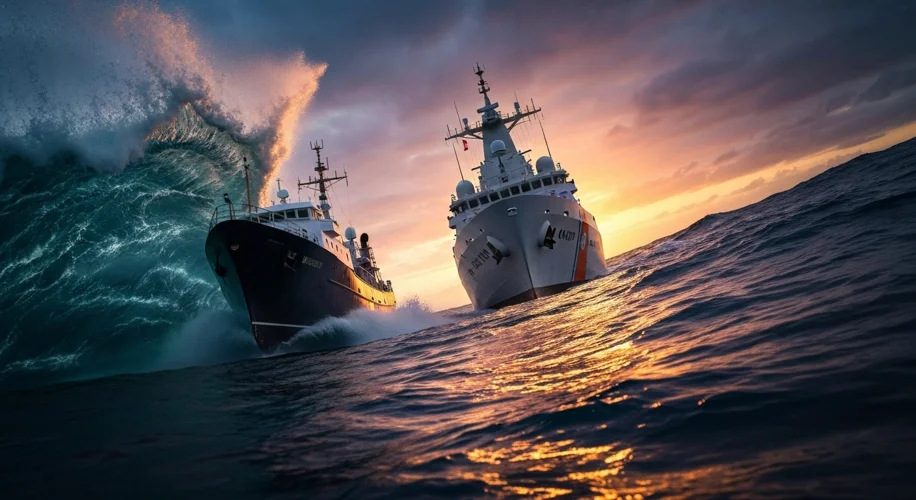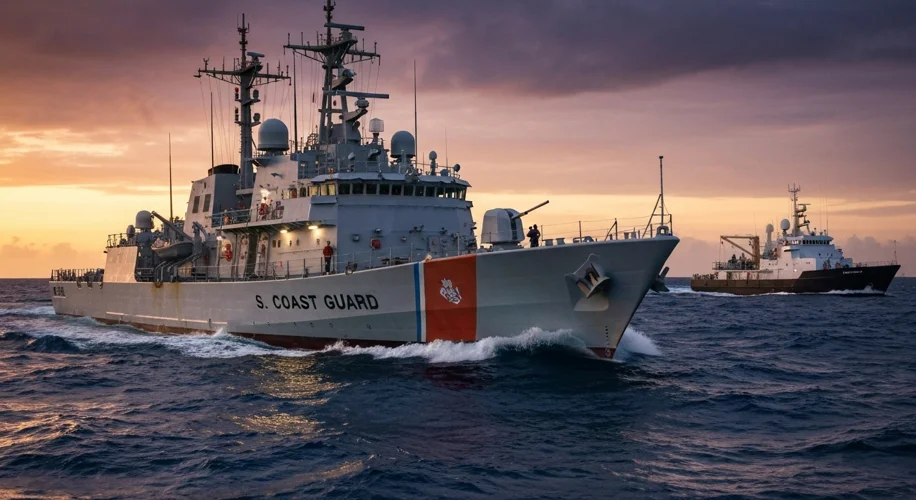The glint of the sun on the turquoise waters of the Caribbean often conjures images of idyllic beaches and vibrant cultures. Yet, beneath this veneer of paradise lies a history far more complex, one intricately woven with the dark threads of drug trafficking. Recent interdiction efforts, like the seizure of suspected drug-carrying vessels, serve as stark reminders of this enduring challenge, a challenge rooted deep in the region’s colonial past, geopolitical importance, and the insatiable global demand for illicit substances.
The Caribbean’s strategic location, a crossroads between producer nations in South America and the voracious consumer markets of North America and Europe, has made it an almost inevitable transit point. This geographical destiny was shaped long before the advent of cocaine or marijuana. For centuries, these islands were coveted territories, pawns in the imperial games of European powers. Spain, Britain, France, and the Netherlands carved up the archipelago, their legacies of economic exploitation and social stratification laying a groundwork that would later be exploited by a new kind of illicit empire.
The colonial era, with its plantation economies built on the brutal labor of enslaved Africans, left deep societal scars. Post-independence, many Caribbean nations grappled with economic instability, weak institutions, and a lack of diversified industries. This vulnerability, coupled with the region’s vast coastlines and numerous small islands, created fertile ground for the rise of organized crime. The burgeoning drug trade, particularly cocaine from Colombia and other Andean nations, found willing intermediaries and transit points in the Caribbean starting in the latter half of the 20th century.
Key actors in this unfolding drama have been as diverse as the islands themselves. Local criminal organizations, often highly sophisticated and ruthlessly violent, emerged as powerful players. They forged alliances with international cartels, establishing intricate networks that stretched across continents. On the other side of this struggle stood a coalition of international law enforcement agencies, including the U.S. Coast Guard, Drug Enforcement Administration (DEA), and various national police forces and navies throughout the Caribbean. Their mission: to intercept shipments, dismantle trafficking organizations, and disrupt the flow of drugs.
The methods employed by traffickers have been as varied as they are ingenious. From unassuming fishing trawlers laden with hidden compartments to high-speed ‘go-fast’ boats and even semi-submersible vessels designed to evade radar, the ingenuity displayed is a chilling testament to the stakes involved. The sheer volume of drugs passing through the region is staggering. For example, in the early 2000s, it was estimated that a significant percentage of the cocaine destined for the United States transited through the Caribbean.

The consequences of this persistent trafficking have been devastating for the Caribbean. Beyond the direct loss of life and the corrosive influence of drug money on local economies and politics, it has fueled violence and instability. Small island nations, with limited resources, have often found themselves overwhelmed. Corruption has become a persistent threat, undermining public trust and hindering legitimate development. The island of Hispaniola, shared by Haiti and the Dominican Republic, has been particularly affected, its socio-economic challenges exacerbated by its role as a key transit point.
International interdiction efforts, while achieving significant seizures, have often been characterized by a cat-and-mouse dynamic. For every vessel intercepted, it is widely believed that many more succeed. The sheer profitability of the drug trade means that traffickers are constantly adapting their methods, seeking new routes and developing more sophisticated concealment techniques. The pressure on interdiction forces is immense, requiring constant vigilance, advanced technology, and robust international cooperation.
The history of the Caribbean and drug trafficking is not merely a tale of illicit goods and law enforcement battles. It is a narrative intertwined with issues of poverty, inequality, post-colonial development, and the complex interplay of global demand. The recent seizures, while commendable, are but snapshots in a long and ongoing struggle. Understanding this history is crucial to comprehending the ongoing challenges and the need for multifaceted solutions that address not only interdiction but also the root causes that make the Caribbean such a vulnerable, yet vital, part of our interconnected world.
Ultimately, the fight against drug trafficking in the Caribbean is a reflection of broader global issues. It underscores the interconnectedness of producer, transit, and consumer nations and highlights the persistent need for international collaboration, robust governance, and sustained efforts to combat the social and economic factors that fuel this illicit trade. The turquoise waters may offer a beautiful facade, but the currents beneath are a constant reminder of a complex and challenging history.

